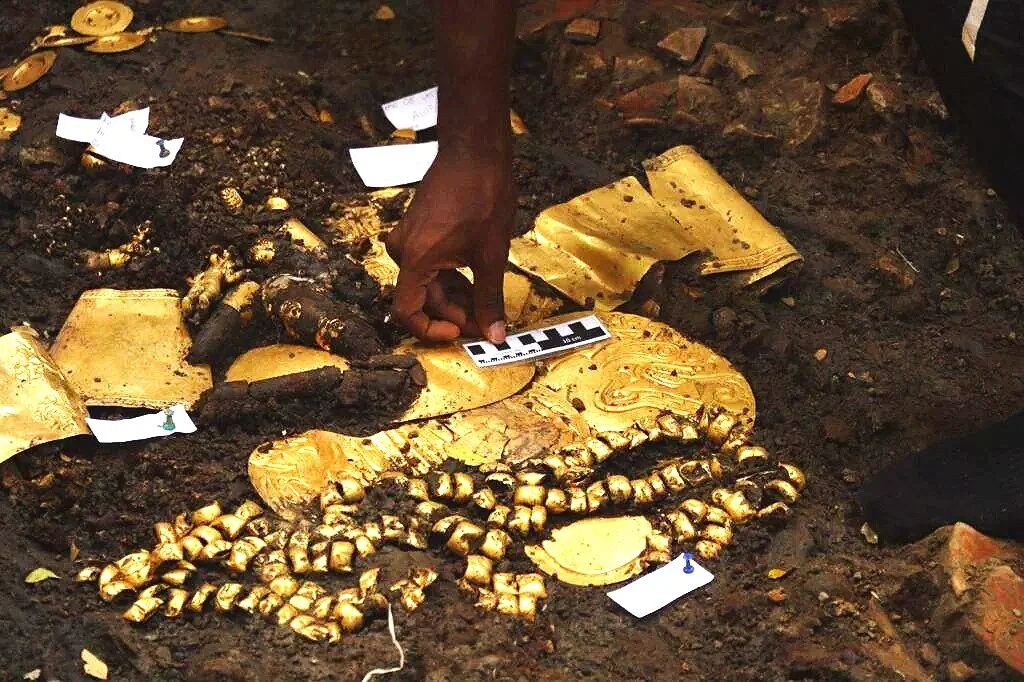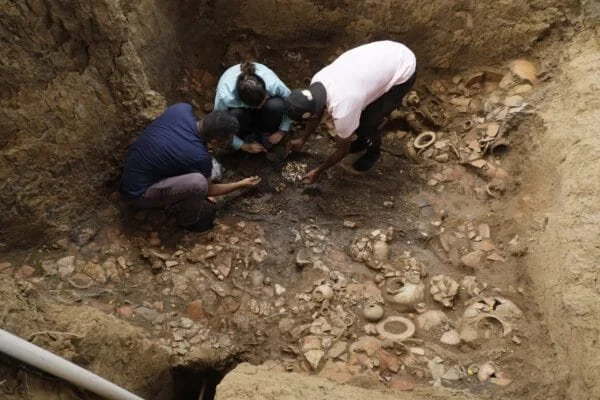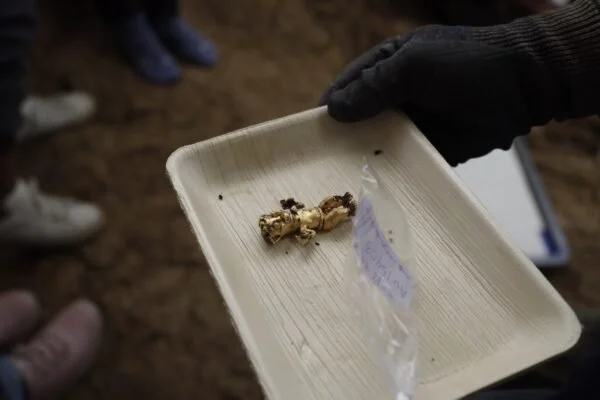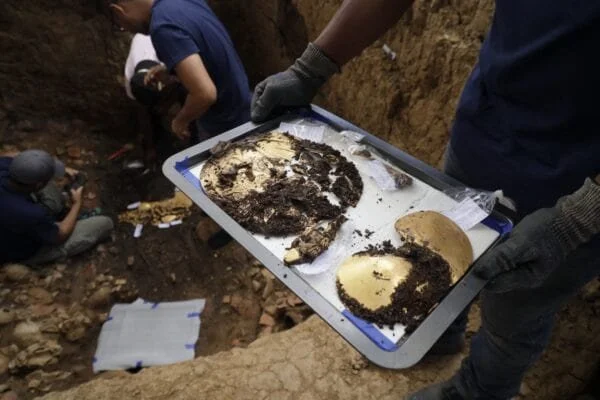A groundbreaking discovery has been made in the El Caño Archaeological Park in Panama, shedding new light on the sophisticated society of pre-Hispanic Coclé. This tomb, believed to belong to a Coclé lord from around 750 A.D., has unveiled a treasure trove of funerary offerings, including ceramic and gold artifacts.
The El Caño Archaeological Park, renowned for its necropolis of tombs and ancient monoliths dating back to 700–1000 A.D., has long been recognized for its historical significance. The recent excavation, part of an ongoing archaeological project initiated in 2022 through a cooperation agreement between the Ministry of Culture and the El Caño Foundation, has focused on thoroughly exploring Tomb No. 9.
The contents of the tomb, including pectorals, belts of gold beads, bracelets, earrings, necklaces, bells, and even a skirt made with dog teeth, speak volumes about the cultural and social wealth of Coclé society. Dr. Julia Mayo, director of the El Caño Foundation and leader of the archaeological project, emphasized the significance of this discovery, offering a glimpse into the life and death rituals of the Rio Grande chiefdom.
Of particular interest is the presence of sacrificial attendants buried alongside the lord, suggesting complex burial practices. The excavation process is ongoing, making it challenging to determine the exact number of individuals buried within the tomb. However, this type of burial, characterized by multiple and simultaneous burials, provides valuable insights into the beliefs and funerary customs of the Coclé society.
The tomb, constructed around 750 A.D., offers intriguing details, such as the lord's burial in a face-down position atop the remains of a woman, in accordance with customary practices of the culture. The El Caño Archaeological Park, established around 700 A.D. and abandoned by 1000 A.D., continues to yield significant archaeological discoveries, enriching our understanding of ancient Coclé society's funerary practices and cultural heritage.











